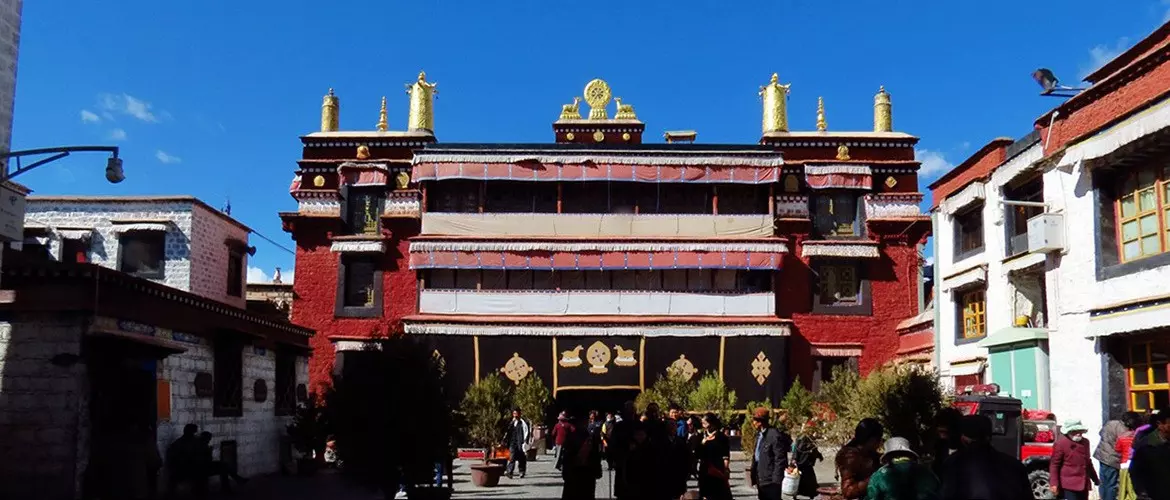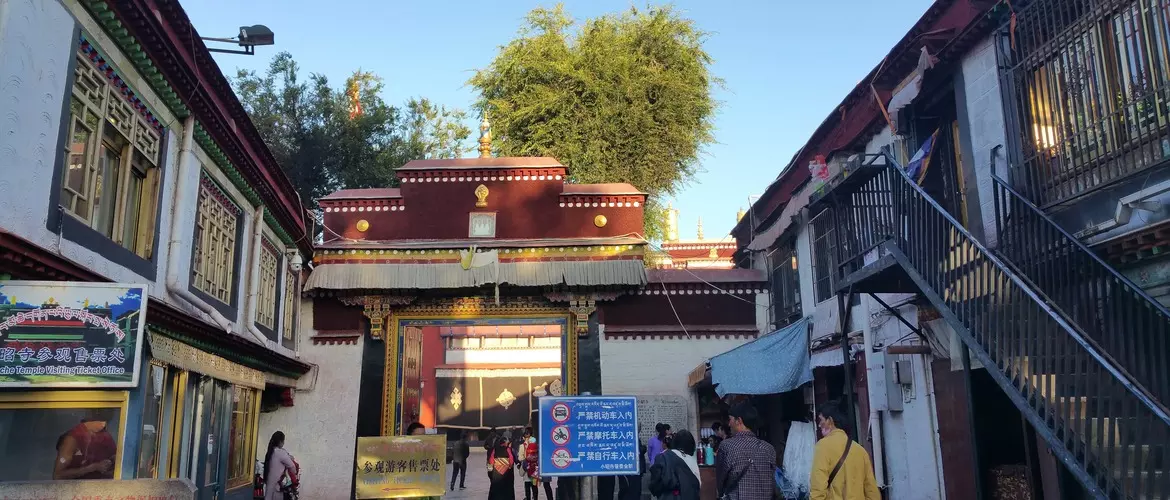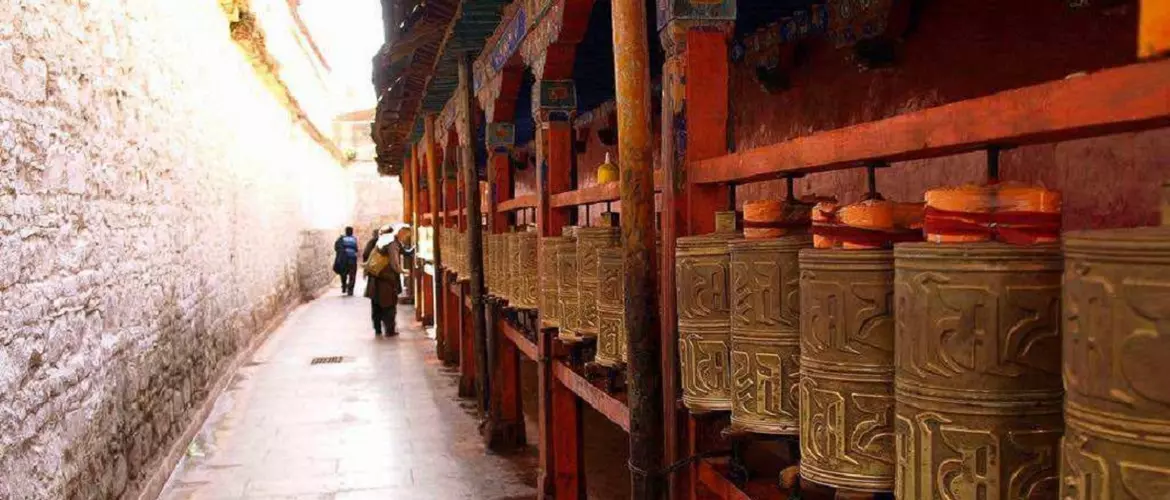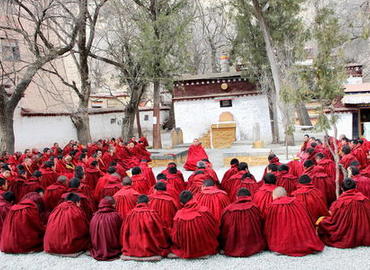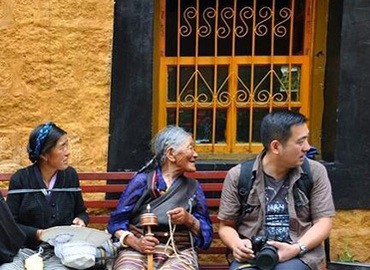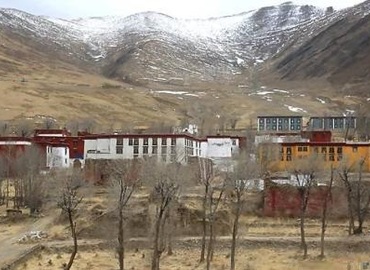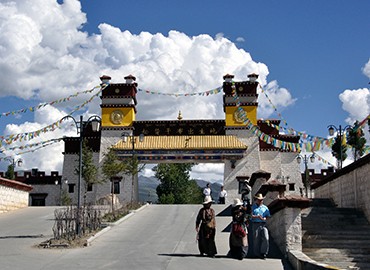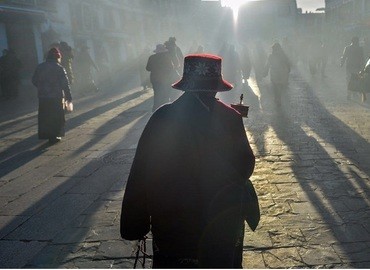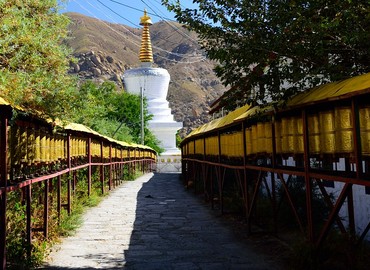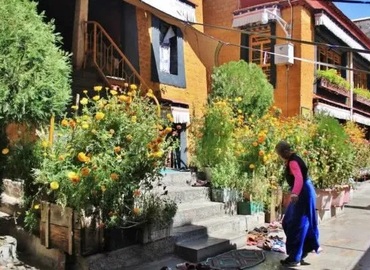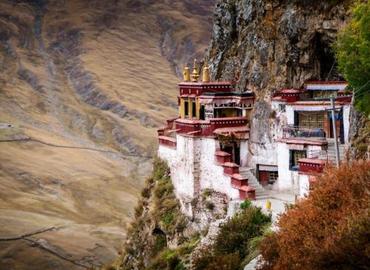Ramoche Temple is located about 500 meters north of Barkhor street in the chengguan district of Lhasa. It was built in the Tang dynasty (641 in the middle of the 7th century AD), the sister temple of the Jokhang temple, which was constructed around the same time but in Chinese style. If you walk to Ramoche Temple from the Jokhang temple, it takes about 15 minutes. It is said that the two temples were set up to house the life-sized statues of Jowo Sakyamuni.
Walking into the solemn hall, the lamas sit on long benches, mutter in measured tones, and recite the incomprehensible Buddhist language. The chanting sounds rise one after another. You can hardly imagine the scene and experience the feeling of awe if you are not there. There is a little Hall on the left, you can donate merits, 5 yuan can choose a small bracelet or hanging ornament as a souvenir, which is a very good gift and the master will also pray for blessings! The murals in the temple are obviously a combination of Han and Tibetan styles, it is very exquisite. In the courtyard, you can see thousands of butter lamps for the worshipers, dim yellow room, full of lights shining, very shocking! In the attic of the back hall of Ramoche Temple, you can far view the golden roof of Jokhang Temple and the Potala Palace.
In History
Princess Bhrikuti of Nepal and Princess Wencheng of the Tang Dynasty came to Lhasa one after another with the historical mission of peace-making marriage with Songtsen Gampo. From Kathmandu, Princess Bhrikuti brought an 8-year-old life-sized statue of Jowo Mikyo Dorje as part of her dowries in the 7th century; and from Chang'an, Princess Wencheng brought a 12-year-old life-sized statue of Jowo Sakyamuni later. More than 1,200 years after Sakyamuni Buddha's nirvana, the two buddha statues have miraculously met again in Lhasa. In order to place and enshrine the two statues, Songtsen Gampo and the two princesses built Ramoche Temple and Jokhang Temple together to enshrine Jowo Sakyamuni and Jowo Mikyo Dorje separately.
The establishment of Ramoche Temple is closely related to the marriage of Princess Wencheng and Songtsan Gambo. According to legend, when Princess Wencheng entered Tibet, Jaga and Lujia, two officers, used a wooden cart to carry the statue of Sakyamuni to Tibet. When it arrived at where the present Ramoche Temple's located, the wooden cart sank in the sand. The erudite and talented Princess Wencheng, who believed in Buddhism, learned that this was the location of the Dragon Palace through calendar calculations, and decided to place the Buddha statue of Sakyamuni here and build a temple for worship. Therefore, the architectural style of Ramoche Temple combines the characteristics of Han-Tibetan architecture.
After Songtsen Gampo's death, during the period of Mangsong Mangzan (reigned from 650 to 676 AD), it's said that the Tang Dynasty would send troops to Tubo to snatch the statue of Sakyamuni Buddha, so in 652 the statue of Jowo Sakyamuni was moved to Jokhang Temple and sealed it in a south chamber. In 712 AD, Princess Jincheng from the Tang Dynasty married Tubo. She took out the Jowo Sakyamuni statue and enshrined it in Jokhang Temple. Meanwhile, she moved Jowo Mikyo Dorje, originally dedicated to the Jokhang Temple, to the Ramoche Temple for worship. From then on, the two Sakyamuni statues exchanged their temples.
Highlights
Although the size and reputation of Ramoche Temple are not as well as the Jokhang temple, there is also a large number of worshippers. Compared with the Jokhang Temple, the 8-year-old life-size statue of Shakyamuni Buddha can be seen at very close range at the Ramoche Temple, while the 12-year-old life-size statue of Shakyamuni Buddha can only be seen from a distance at the Jokhang temple. The 8-year-old life-size statue of Shakyamuni Buddha, sitting in the silver throne surrounded by two dragons. It is kind and holy.
Email response within 0.5~24 hours.


